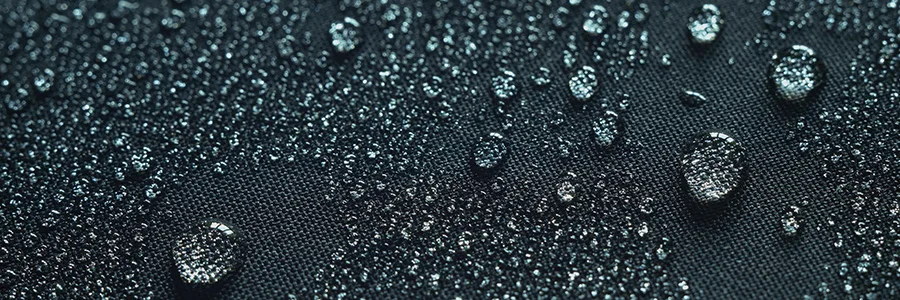
Industrial environments can be harsh, full of dust, water, extreme temperatures, and other hazards that can damage electronic equipment. Choosing the right protective rating for industrial computers, displays, and other devices is critical to ensure they survive in these conditions.
Two key rating systems are widely used to describe enclosure protection: the IP rating (Ingress Protection) and the NEMA rating (National Electrical Manufacturers Association). Understanding these ratings will help you select equipment that stays reliable in tough environments, preventing costly downtime and damage.
IP ratings are international codes defined by the IEC (International Electrotechnical Commission) to classify how well an enclosure resists intrusion from solid objects and waters.
An IP rating is usually written as “IP” followed by two numbers (for example, IP65 or IP67). The first digit ranges from 0 to 6 and indicates protection against solid particles like dust. The second digit ranges from 0 to 9 (or 9K) and indicates protection against water (or any other liquid). In general, higher numbers mean greater protection in each category.
It is important to note that the two digits are independent; a high dust protection level does not automatically imply anything about liquid protection, and vice versa. IP ratings may also include optional letters to provide additional details, but these are less commonly used in product specs.
IPX9 is defined by IEC 60529. IP69K is from ISO 20653 (road vehicles). Many industries reference both high pressure and high temperature washdown.
IP water protection ratings are not cumulative above IPX6. IPX7/8 (immersion) do not imply compliance with IPX5/6 (jets)
NEMA ratings are a North American system (defined by NEMA Standard 250) for classifying enclosure protection. Instead of two numbers, NEMA uses Type designations like 1, 4X, 12, etc.
Each NEMA specifies a certain level of protection against environmental hazards. These ratings consider not only dust and liquid (like water) ingress, but also factors like corrosion resistance, construction quality, and formation of ice on the enclosure. In other words, a NEMA rating covers a broader set of conditions.
For example, NEMA 4X enclosures are designed for indoor or outdoor use and protect against rain, splashing water, hose-directed water, and windblown dust, and they are built of corrosion-resistant materials. A NEMA 6P enclosure is built to be submersible and can handle prolonged immersion, as well as providing corrosion protection for outdoor or corrosive environments.
* Enclosures with NEMA types 1 and 2 may be ventilated.
Both IP and NEMA rating systems are used to describe how well equipment is sealed against the environment, but they originate from different standards and have some differences in scope.
In practice, this means a NEMA rated enclosure might cover additional concerns that an equivalent IP rating would not explicitly certify. For example, NEMA 4X roughly corresponds to IP66 in terms of sealing dust and strong water jets, but NEMA 4X also guarantees corrosion resistance, which IP66 alone does not address.
Likewise, a NEMA 6P enclosure (for prolonged submersion) might be compared to IP68, but NEMA 6P also requires testing for ice buildup and prolonged water exposure that go beyond a basic IP68 test.
That said, we must point out that no official one-to-one correlation exists between IP and NEMA ratings. IP & NEMA correspondences are approximate. See ANSI/NEMA 250-2020 and IEC 60529 for full specifications.
Many industries operate in conditions were using the right IP or NEMA rating is vital for protecting equipment.
For example, military computers need high IP ratings to survive dust and rain in combat zones. Food processing requires IP69K or NEMA 4X ratings to withstand daily washdowns. Mining demands IP65 or higher to keep out dust and mud.
Oil and gas facilities often need NEMA 4X enclosures for outdoor, corrosive environments. Transportation and logistics use IP54 to IP65 systems for devices exposed to dust, rain, and vibration.
Understanding IP and NEMA ratings is key to selecting industrial equipment that will withstand its working environment. An IP rating tells you how protected a device is against intrusion of dust and water.
A NEMA rating provides a broader assurance of environmental protection, including corrosion resistance and ice or oil protection. When specifying rugged computers and enclosures, consider the specific challenges of your environment and choose a rating that covers those hazards.
The right IP or NEMA rating ensures your devices are shielded against environmental threats, so operations continue smoothly and reliably.
At VarTech Systems, our Project Managers—with an average of 15+ years of industry experience—are ready to customize a computer, monitor, or HMI workstation solution to meet your needs. Drawing from extensive backgrounds in manufacturing, military, oil and gas, and marine applications, they provide expert guidance throughout your project journey.
Please fill out our contact form, call us, or email us and we will connect with you shortly.

Based in Clemmons, North Carolina, VarTech Systems Inc. engineers and builds custom industrial and rugged computers, monitors, and HMIs.